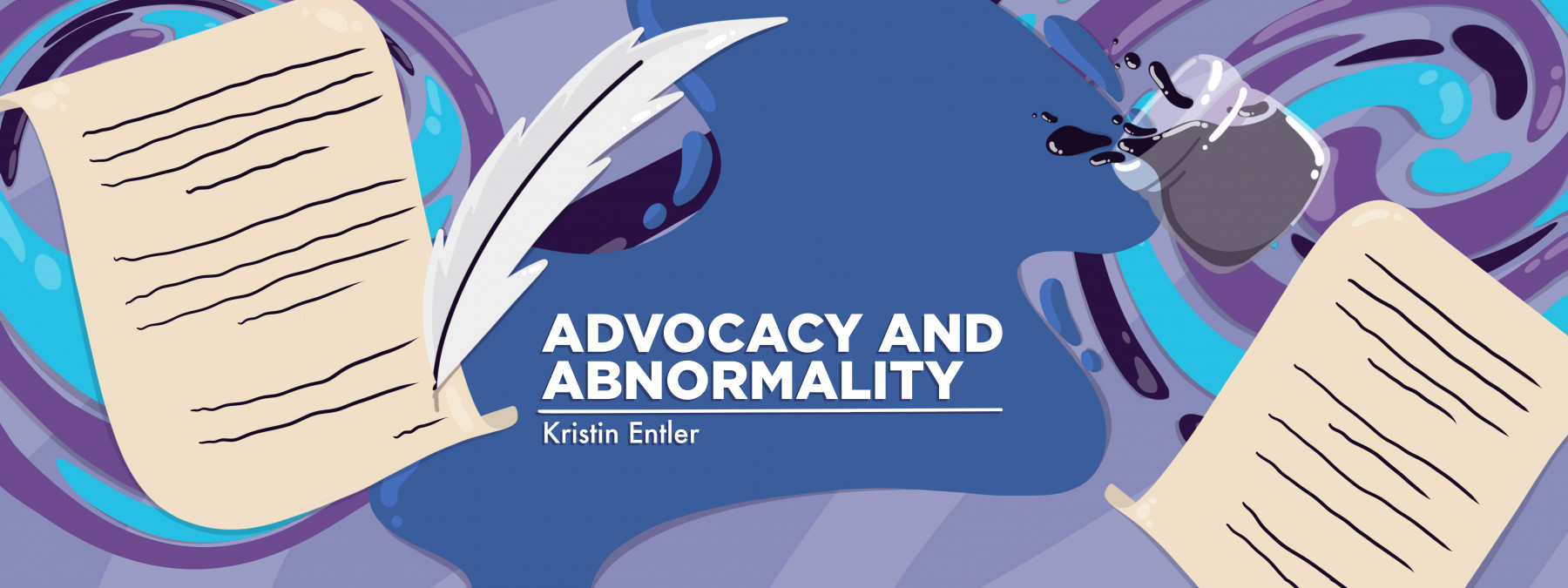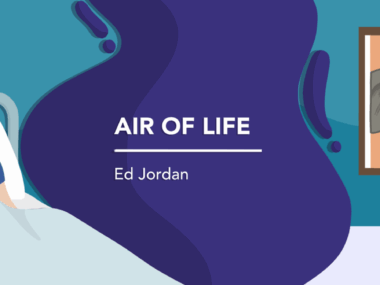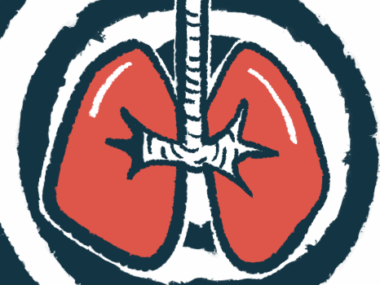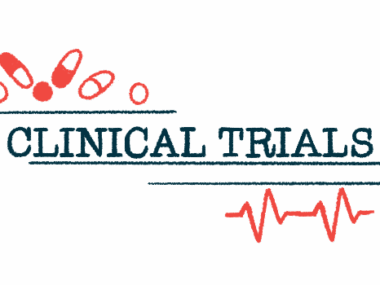Burnout, Bumps, and Bruises: Learning to Accept My Chronic Illnesses
Written by |

I’m just going to come right out and say it: I don’t want to write about being chronically ill this week. Specifically, I don’t want to be chronically ill this week.
I know this isn’t revolutionary; what person grappling with cystic fibrosis and related diabetes, and all the symptoms, side effects, and societal barriers that come with unresolvable diagnoses hasn’t had days when they just want to hit pause?
So instead of talking about my illness directly, I want to talk about a perpetual bump I’ve developed on my finger. For starters, I’m not entirely sure what happened or where it came from.
My column is still pretty new, and we don’t yet know each other too well in the grand scheme of things. An important piece of background information about me is that I am very, as my mom phrases it, “accident-prone.”
A quick anecdote to prove it: When I was about 8 years old, I took my dog out with my lifelong best friend who was visiting at the time. Tasha, an overly excitable girl, was a keeshond that weighed about 40 pounds. We used a retractable leash.
Long story short, things got out of control, and before we could react, I was hog-tied by my dog, who had circled me five or six times before taking off straight at something she saw in the yard. Probably a squirrel. I had rope burns on the backs of my knees that took weeks to heal.
Being clumsy, or just physically unlucky, has always been a part of who I am.
Now, back to this finger injury I’ve recently managed to get. It’s on the back of my index finger on my dominant hand, between my fingernail and what is scientifically called the proximal-interphalangeal joint.
All of this is to say that I have managed to scrape my finger where the injury naturally knocks and grazes against almost everything all of the time, which is making the healing process not just slow but eternal.
I want to clarify here that it’s not infected, although it looks like it should be for a wound that’s stuck in a perpetual phase of healing, because it continues to be reinjured on a small scale several times a day.
I’m trying to consciously remind myself to be careful, but here’s the other thing about it: It only hurts when I bump into something. (Don’t worry, Mom, I’m putting Neosporin on it.) Then, when I bump into it, I’m suddenly reminded that it’s there. Like putting on hand sanitizer to be reminded that, oh yeah, paper cut!
Am I telling you all of this just to complain about this now red and perpetually just-swollen-enough-to-rub-against-everything bump that is annoying enough to be on the edge of infuriating? Admittedly, yes, a little bit.
But there’s more to it than just the surface-level annoyance of a scrape on my body that’s doing its best to heal despite pure dumb-placement bad luck. Because I’m diabetic, a voice in the back of my brain reminds me that slow healing is a side effect of diabetes and representative of permanent long-term damage.
The truth is this: Even when it’s not about being chronically ill, I can’t get away from the fact that my body is always sick. Instead of talking about it, I’ve found it sometimes helps to talk around it and accept the parts of the truth I can’t change by just allowing them to exist in the background.
Lately, I’ve been feeling like Sisyphus pushing a boulder up the hill with muscles weakened by quinolones. I’m tired and waiting for a break that never comes, but I can still do what I can to make life in this body easier for myself.
I’ve gone out and bought a new pack of Band-Aids to put on my finger to give it some padding. I can’t help that it’s going to brush against my pants when I pull them up, or that it catches on the edge of a folder when I reach into my backpack for my keys.
But just like it’s my responsibility to still take my medications each morning and evening, it’s equally my responsibility to protect this small part of me that can use my help. We only get one body. So we may as well make the best of it, even on days when we just don’t want to.
Note: Cystic Fibrosis News Today is strictly a news and information website about the disease. It does not provide medical advice, diagnosis, or treatment. This content is not intended to be a substitute for professional medical advice, diagnosis, or treatment. Always seek the advice of your physician or other qualified health provider with any questions you may have regarding a medical condition. Never disregard professional medical advice or delay in seeking it because of something you have read on this website. The opinions expressed in this column are not those of Cystic Fibrosis News Today or its parent company, Bionews, and are intended to spark discussion about issues pertaining to cystic fibrosis.








Paul & Debbie
This is a great talk and very funny, for it so clearly depicts what is going on in the mind of the chronically ill. Or, to be more precise, in the mind of the one who thinks of her/him self as being chronically ill. Let me show how I see this.
First, there is identification. I am chronically ill. This is an illusion of the mind already, for the body has some persistent issues, but there is no one there to own this, other than the illusory mind, the I.
Then, there is resistance: I don't want to think/write about it. This is the mind being tired of (upholding) its self made illusion of illness.
Then, in order to get away from the illusion of chronic illness, the mind feeds itself with a distraction and focuses on a temporal illness: the wounded finger.
This of course is very tricky, because it is only a very small step from the temporal problem to the chronic problem. So not before long, indeed the finger is connected in the mind with a possible other cause (diabetes) that, surprise surprise, is a chronic thing again.
All the time, the objectively observing reader is wondering only about one thing: "Why didn't she put a bandage around the bloody finger in the first place, it would have healed even before she ever could have developed the thought of writing about it? This is probably Gestalt. The mind enjoyed the finger being hurt again and again, because it provided such a nice distraction from the bigger illusory problem it said it was tired about (but it lied to itself - for it loves all problems, they all together form an important part of the structure of its own illusory existence).
Meanwhile, going through these futile exercises of assertion and denial, the mind manages to form and assert all kinds of new/old assumptions and convictions about itself: I am clumsy, I am physically unlucky etc. This is on the one hand (!) painful, on the other very useful to further acknowledge its own existence. For, when I am clumsy, there must be an I to be clumsy and to tell itself and the world about its clumsiness, no? This is the illusion trying to proof itself to itself and to the world over and over again. It is very exhausting and a lot effort. Energy wasted that the body could have used much better in dealing with the real issues.
So, very soon the mind is back on its own hobbyhorse again: I/my body is always sick. No matter what I do, I am always responsible for taking care and making sure that everything continues working, that nothing goes ever further wrong with it etc. It complains, but also is happy again to complain, because when I complain, I am. This is a variant on Cogito, ergo sum. The temporal resistance to its own identification has been addressed well enough for now, and it "happily" returns to business as usual (only to reappear the next time, when no doubt a new (self) talk will arise.
All the time, no one seems to care about questioning the primary assumptions that the mind makes: I exist, I am the mind, I am the body as well and I am the one who is calling the shots, otherwise disaster will happen.
While in fact the mind (I) doesn't exist other than as an illusory fabricate of its own thoughts and feelings in a self referential loop, the body is just minding its own business and it needs no help from the mind at all (is created itself in the womb even without a mind being present), it is only hampered in this by the minds constant and ignorant interferences, and no deliberate doing is needed, is even happening: all goes by itself, without the mind interfering the body will take care of itself, when hungry eat, when thirsty drink, when tired sleep, when hurt care, etc.
The only thing you have to do, it acknowledge the illusion of the mind and just let nature take care of itself. There will be medication taken, therapy done, bandage applied, without thoughts or agenda that link this up to an illusory entity called Me. This is freedom from the mind. Wu wei. Moksha. Liberation. Enlightenment. It is not mystic, it is not special, it is just allowing what already is without the need to control or manipulate. I have experienced all this myself and gone through and beyond it, but don't take my word for it, try it yourself, that is the only way to freedom. This is not a belief, but a process that can be tested and applied yourself to yourself.
Thank you Kristin for these very clear descriptions of the process of your mind. Now, contemplate the other option I put forward here. No mind. I am the Self. And try it out. In my 58 years with CF, it took me only ten years, well spent. You are still young, so it is a good investment I promise you. And you might even do it much more quickly, for you are already lucid enough to write about the process.
On our website there is a great Tale about Identification with our illness, and to go beyond this. Look for parkinsjordaans on the internet, it is Tale no 15 in the section "about Debbie& Paul". Hope it is illuminating and this was helpful to anyone and to you.